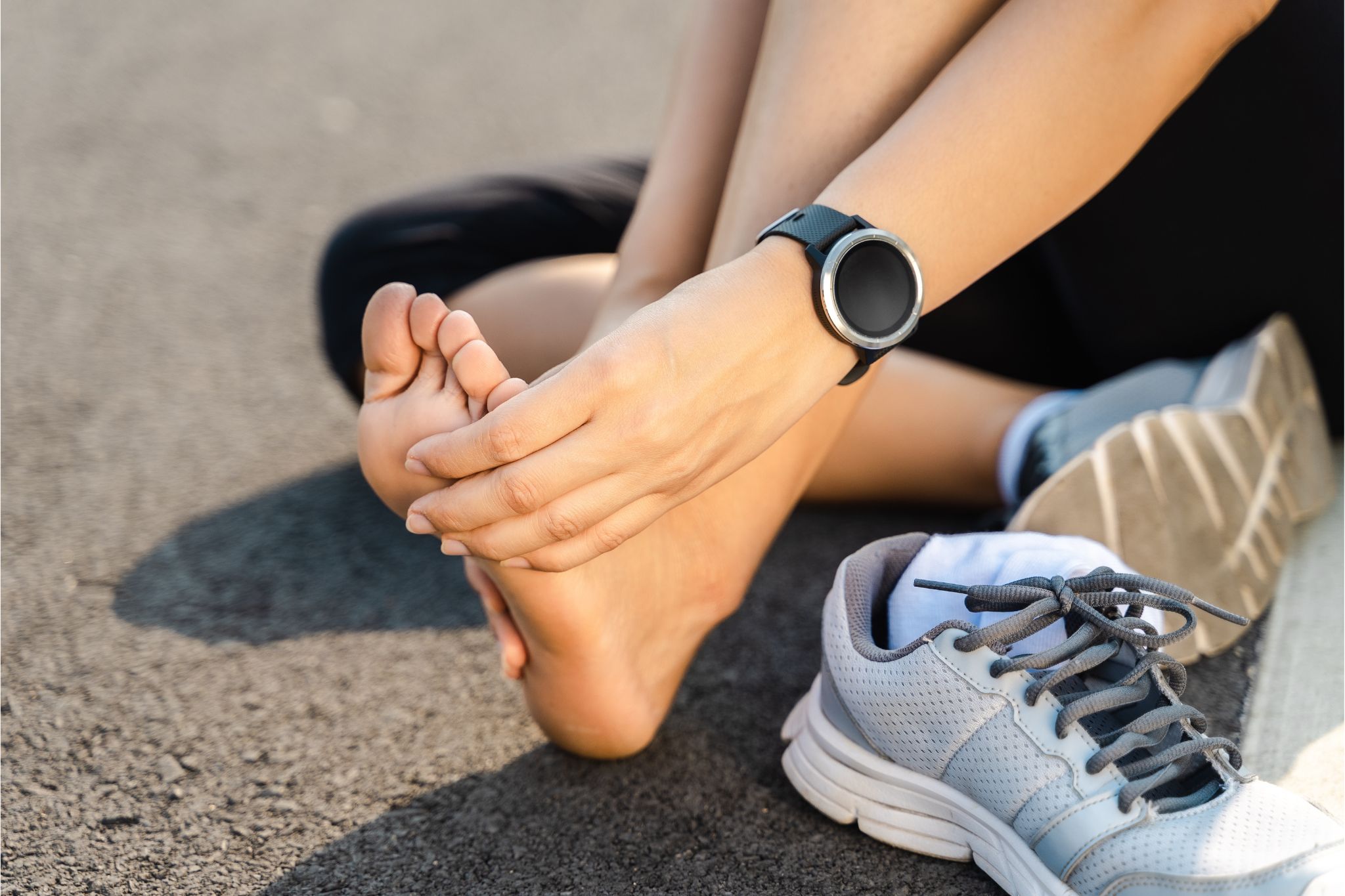Foot Health for Runners: Common Injuries and Recovery Techniques
As runners, we often focus on the miles we log, the pace we maintain, and the races we conquer. However, amidst the exhilaration of the run, it’s crucial not to overlook the foundation of our activity – our feet. Foot health is paramount for runners, as even minor issues can lead to significant setbacks.
In this blog, we’ll delve into common foot injuries, including sports injuries like stress fractures, and recovery techniques, with a particular focus on the notorious plantar fasciitis. We’ll explore shoe selection, proper running form, warm-up and cool-down routines, as well as proactive foot care strategies to keep you moving with strength and resilience.
Recognizing the Importance of Foot Health for Runners
Runners, more than most, understand the vital role feet play in their performance. Yet, it’s easy to neglect foot health until an injury arises. By prioritizing preventive care and understanding the signs of potential issues, runners can minimize downtime and maximize their enjoyment of the sport.
Overview of Common Injuries Associated with Running
Running is a high-impact activity that places considerable stress on the feet and lower limbs. Understanding the common injuries that afflict runners is the first step toward effective prevention and treatment.
Common Running-Related Foot Injuries
Plantar Fasciitis
Plantar fasciitis is one of the most prevalent foot injuries among runners. It occurs when the plantar fascia, the band of tissue connecting the heel bone to the toes, becomes inflamed or strained due to overuse or improper biomechanics.
Causes and Symptoms
Overpronation, tight calf muscles, inadequate footwear, and sudden increases in training intensity are common culprits behind plantar fasciitis. Symptoms include heel pain, particularly in the morning or after prolonged periods of rest, which may worsen during activity.
Effective Recovery Techniques and Preventive Measures
Rest, ice therapy, stretching exercises, orthotic inserts, and wearing supportive footwear are essential components of plantar fasciitis recovery. Preventive measures include gradual training progression, proper footwear selection, and incorporating strength and flexibility exercises into your routine.
Sports Injuries: Stress Fractures
Stress fractures are tiny cracks in the bones caused by repetitive impact and overload, commonly affecting the metatarsals (bones of the foot) and the tibia.
Recognizing Stress Fracture Symptoms
Symptoms include localized pain, swelling, and tenderness over the affected bone, exacerbated by weight-bearing activities. Stress fractures often result from overtraining, inadequate rest, and biomechanical abnormalities.
Rehabilitation and Techniques for Avoiding Recurrence:
Rest, immobilization, and gradual return to weight-bearing activities are crucial for stress fracture recovery. Proper nutrition, bone-strengthening exercises, and addressing underlying biomechanical issues can help prevent recurrence.
Choosing the Right Running Shoes
The significance of proper footwear cannot be overstated when it comes to foot health and injury prevention for runners.
The Impact of Footwear on Running-Related Injuries
Ill-fitting or worn-out shoes can exacerbate existing foot issues and increase the risk of injury. Understanding your foot type and gait pattern is essential for selecting the right shoes.
Key Features in Running Shoes for Proper Support and Cushioning
Look for shoes with adequate arch support, cushioning, and stability features tailored to your foot anatomy and running mechanics. Replace your shoes regularly to maintain optimal support and shock absorption.
Tips for Regular Shoe Replacement to Prevent Overuse Injuries
Monitor the wear patterns of your shoes and replace them every 300-500 miles or when signs of structural breakdown become evident.
Proper Running Technique for Foot Health
Running with proper form not only enhances performance but also reduces the strain on your feet and lower limbs.
Maintaining a Balanced and Efficient Stride
Focus on landing midfoot, maintaining a slight forward lean, and engaging core muscles to minimize impact and promote efficient propulsion.
Gradual Progression and the Importance of Listening to Your Body
Avoid sudden increases in training volume or intensity, and pay attention to warning signs such as persistent pain or discomfort. Gradually progress your mileage and incorporate rest days to allow for adequate recovery.
Warm-Up and Cool-Down Routines
Proper warm-up and cool-down routines can improve circulation, flexibility, and muscle readiness, reducing the risk of injury and enhancing recovery.
The Significance of Dynamic Warm-Up Exercises
Prioritize dynamic movements such as leg swings, lunges, and high knees to increase blood flow and prepare the muscles and joints for activity.
Cool-Down Stretches for Flexibility and Recovery
Include static stretches targeting major muscle groups, focusing on the calves, hamstrings, quadriceps, and hip flexors, to alleviate tension and promote muscle relaxation.
Rest and Active Recovery Strategies
Rest is a critical component of the recovery process, allowing the body to repair and rebuild damaged tissues.
Ice and Compression Therapy for Acute Injuries
Apply ice packs and use compression garments to reduce inflammation and swelling following intense workouts or acute injuries.
Diversifying Physical Activities to Reduce Overuse
Overreliance on running can lead to overuse injuries and burnout. Incorporating cross-training activities can mitigate these risks while improving overall fitness and performance.
Incorporating Low-Impact Exercises for Foot Health
Swimming, cycling, and elliptical training offer cardiovascular benefits with minimal impact on the feet and lower limbs, providing an opportunity for active recovery.
Balancing Running with Strength Training for Overall Fitness
Strength training exercises targeting the lower body, core, and stabilizing muscles can improve running performance, enhance biomechanical efficiency, and reduce injury risk.
Emphasis on Proactive Foot Care and Recovery Techniques
Prioritizing proactive foot care measures and seeking professional guidance can mitigate the risk of recurring injuries and optimize long-term foot health.
Consult with Our Podiatrists for Personalized Guidance
If you’re experiencing persistent foot pain or recurring injuries, consulting with our knowledgeable team can provide personalized assessment, treatment, and preventive strategies tailored to your specific needs.
Take the Next Step Toward Injury-Free Running
Investing in your foot health is investing in your running longevity. Prioritize preventive care, listen to your body, and seek professional guidance when needed to ensure a lifetime of pain-free miles. Contact us to schedule an appointment and let us help you get back on the road!
Maintaining optimal foot health is essential for runners of all levels. By understanding common foot injuries, including sports-related issues like stress fractures, adopting proper footwear and running techniques, implementing effective warm-up and cool-down routines, and incorporating rest and recovery strategies, you can minimize the risk of injury and maximize your running enjoyment. Remember, a proactive approach to foot care is key to sustaining your passion for running for years to come.


